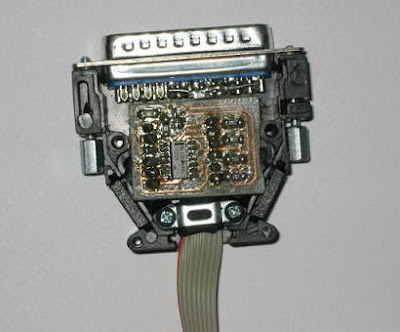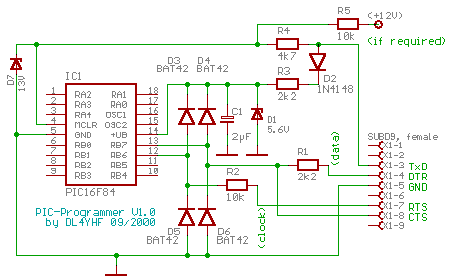Tait Serial Programmer
Connect the radio programming cable’s 9 or 25 pin connector to the computer’s serial port. Connect the radio programming cable’ s RJ-11 telephone-style plug to the radio’s microphone socket. Tip: You can change the COM port the application uses to communicate with. The Tait 2000II series are fantastic radio for conversion to Amateur Radio bands as it requires few adjustments and the programming software is very straightforward. The radio identification labels indicate that the radio I have for conversion has 4 channels, has a frequency range of 136Mhz to 174Mhz and is set for a narrow FM deviation of 2.5khz. The first time you run the program you have to configure the hardware. In the Hardware settings window you can choose one of the different programmers: JDM, Conquest, TAFE, TAIT Serial, Fun-Card, TAIT Parallel, ProPic 2, SCHAER, STK200, AN589, WILLEPRO, Flutty, DL2TM, El Cheapo, ER1400, and External. To setup a DMR repeater with MMDVM, often the transceiver used are Motorola. This time, I sought to implement TAIT ® branded transceivers also used by professionals. The TM8100 series (TM8105, TM8110, TM8115) works with MMDVM in both ways, in reception and transmission. Thanks to this tutorial, you are invited to realize the settings of your Tait ® transceivers.
Tait TM8105 Notes
Required Stuff

The Tait T800 series are programmed as a seperate Transmitter and Receiver. The early models were Eeprom while the later models had an RJ45 socket to talk direct to. Programming Series I Modules PGM800Win supports the programming of Tait T800 Series I modules, but you cannot programme by connecting to the rack’s programming port. Instead, you use an EPROM programmer to write the configuration informa- tion to the module’s EPROM.
- TAIT TM8100 series radio
- Genuine FTDI https://www.amazon.com/gp/product/B075N82CDL
- DB9 male connector/breakout
- DB15 female connector/ breakout
Required Software (Windows)
- Windows OS (probably 7 or newer)
- FTDI programming utility
- TAIT TM8k programming software
Resources
Power is supplied by a 4 pin molex connector on the back of the radio. Suitable power levels are 10.8 - 16VDC, with 13.8VDC being nominal.
Digi-key part number WM18435-ND works for this connector, along with these contact inserts WM3112CT-ND
A pigtail power connector has also been seen onEbay shipping from the UK.
This blog post covers the programming really well. Some key notes repeated here for posterity.
USB Serial interface
Programming is done using a Windows computer and a USB to serial cable. Ready-made programming cable are available on eBay, but they are pricey (considering what they are). A DIY solution is very approachable.
Since the Rx/Tx logic levels are inverted on the Tait serial connector, the FTDI chip must be flashed using the FT_PROG utility. This requires a genuine FTDI chip (i.e., not one you find on ebay for $3). Amazon sells a genuine FTDI board that was able to be reprogrammed.
Using FT_PROG, scan for devices to load your FTDI board and open up 'Invert RS232 Signals'. Select 'Invert TXD' and 'Invert RXD' then hit the lightning bolt to program the device. Once programmed, reload the device with FT_PROG to verify the setting were persisted. This only works with genuine FTDI boards. A counterfeit eBay board will be able to be read by FT_PROG, but cannot be flashed.
3.3V must be used on the FTDI board. Also, be sure to use the digital ground.
Programming is done via the front DB9 connector.
A wiring diagram
Programming Software
The programming software is the Tait TM8100 Programming Application. The version used was 3.09. It can be found on hamfiles.co.uk and possible elsewhere.
NOTE: I have a copy here but I'm not sure about redistributing it on the TARPN website. We'd need to check on the license.
Once the radio is connected to Windows via USB, click 'Read the radio' to confirm it can be programmed.
Tait Serial Programmer Salary
Here is a programming template that includes the following:
- Networks -> Basic Settings -> Squelch Detect Type => Noise+RSSI
- Channel Setup -> Channels
- Add a single channel (ID=1) with the desired frequency, power level, and bandwidth

- UI Preferences -> Minimum Volume Level => 128
- PTT -> External PTT (1)
- Programmable I/O
- Digital
- AUX_GPI1 -> Input => External PTT 1
- IOP_GPIO2 -> Output => Busy Status
- IOP_GPIO4 -> Input => Unmute Audio Output Path
- Select unmute all audio paths under Action Parameters
- Audio
- RX -> Tap Out => R2
- EPPT1 -> Tap In => T13
These I/O settings allow us to use a GPIO pin for PTT (pin 12 on the accessory connector) and tap into the audio chain closer to the FM modulator (we bypass pre/de-emphasis, filtering, and such).
The radio is connected to the TNC-Pi (or any TNC, or a soundcard) through a rear DB15 female connector called the 'accessory connector'.
It contains many GPIO pins which are readily programmable by the software.
We are interested in pins 7, 13, 12, and 15 for the TNC-Pi. Recall that we programmed pin 12 as an external PTT. It's likely that this connector can also be used for programming (pins 11, 3, and 15), but this hasn't been tested.
 TAIT pin 7 (AUD_TAP_IN) should be connected to TNC-PI pin 1 (TX DATA)
TAIT pin 7 (AUD_TAP_IN) should be connected to TNC-PI pin 1 (TX DATA)TAIT pin 13 (AUD_TAP_OUT) should be connected to TNC-PI pin 5 (RX DATA)
